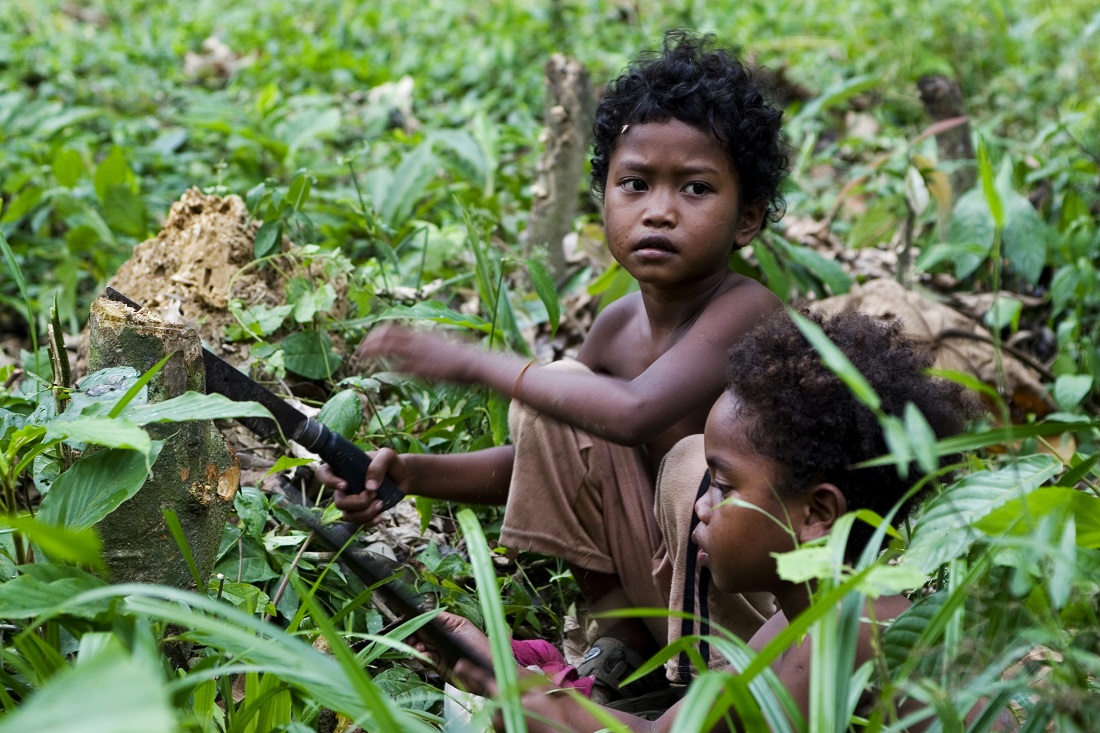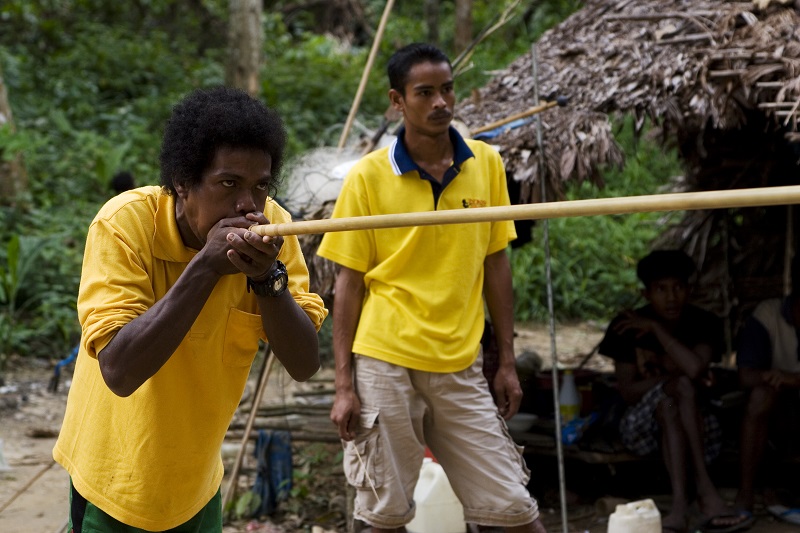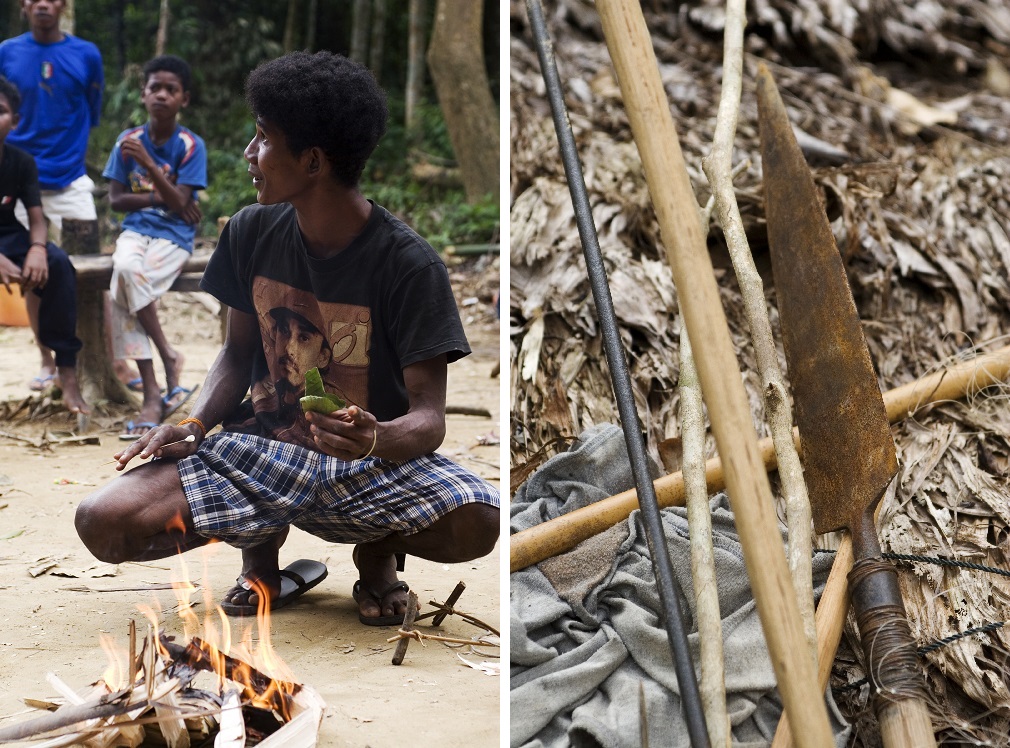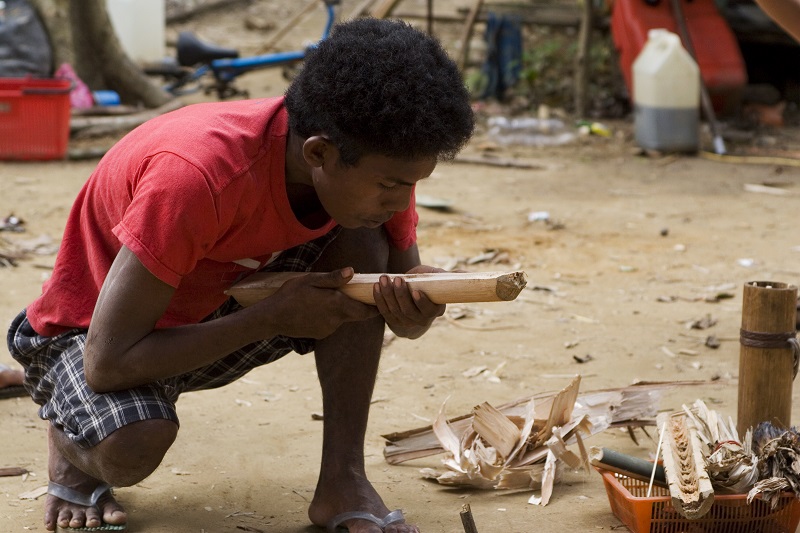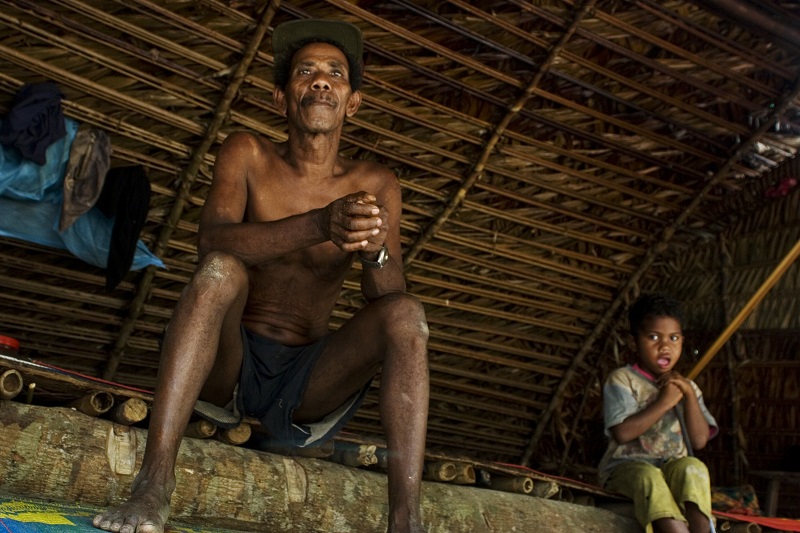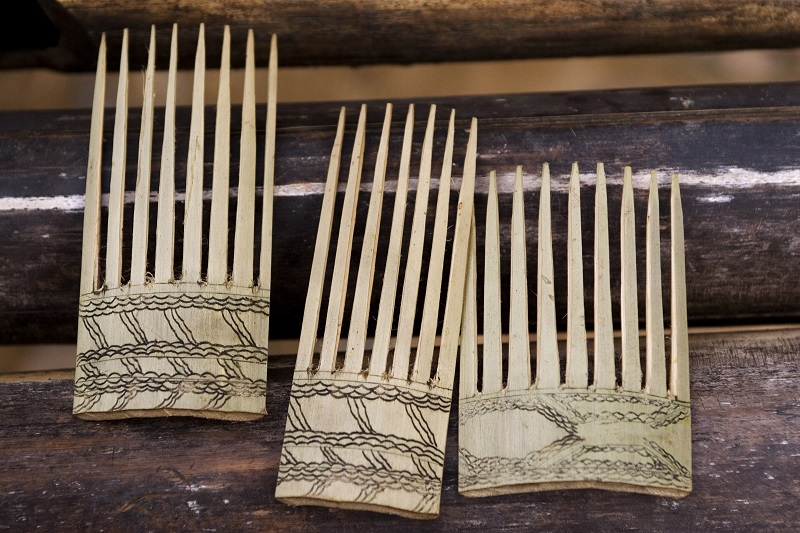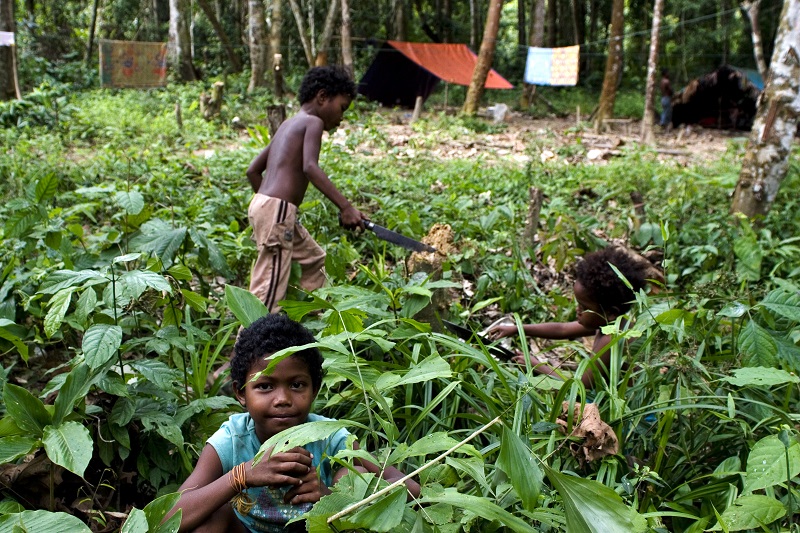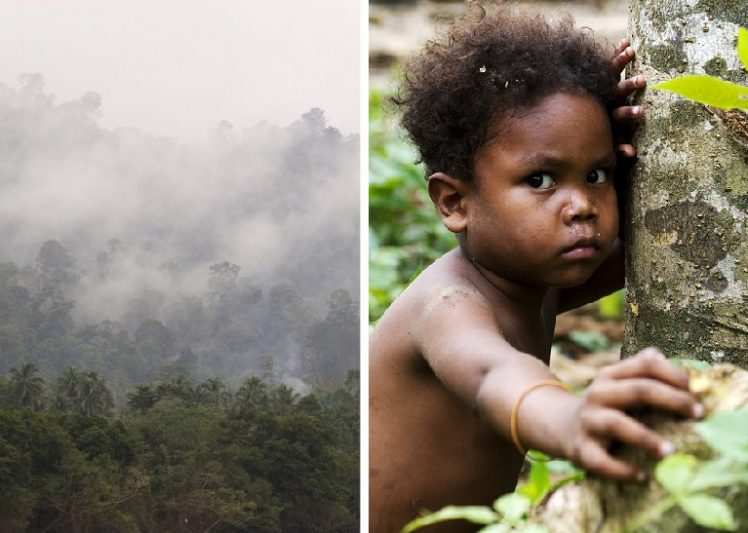
Stuart Forster is an award-winning travel photojournalist from the UK. Here he discusses the capturing the world on film and the sometimes intrusive nature of photography.
If you enjoy travel photography, you’ll appreciate how photos of people can bring your sets of images to life and convey a sense of place. Taman Negara’s undulating landscape is characterised by dense rainforest, meaning opportunities to photograph aspects of nature, and is the home to indigenous Batek tribespeople.
The Batek people are one of Malaysia’s 18 recognised aboriginal groups. Consequently, you may hear them described by the collective term Orang Asli, which means ‘original people’. Their population numbers around just 1,500. Most live in encampments dotted around the jungle.
Traditionally, the Batek people are hunter gatherers. For generations they have employed blowpipes to propel poison-tipped darts to hunt prey in the forest. Cross the Tembeling River into the jungle and there’s a chance you’ll see spears leaning against their huts.
In order to earn an income from the many travellers visiting Taman Negara, at set times of the day members of the Batek tribe demonstrate their hunting skills using dummy targets. They also show visitors how they light fires using friction to ignite wood shavings and kindling. Undoubtedly, seeing that is engrossing.
Visitors then have a chance to try those activities for themselves. Of course, neither is as easy as it looks when undertaken by a skilled member of the Batek people. Inevitably failed attempts to propel a dart from a blowpipe result in laughter. Occasionally a tourist hits the target with impressive aplomb.
However, interactions with the locals are brief and don’t provide great insights into the heritage and lifestyle of the Batek people. Linguistic differences meant that there was little opportunity to exchange ideas by talking.
I left the Batek settlement with an uneasy feeling. Was visiting exploitative? The men that I photographed had just put on a show. At times I had been within touching distance of them but I never felt that I got close to them. One of the challenges posed by photographing people while travelling is that you never quite know how people are going to react to the camera. The Batek people have been clearly photographed enough times to accept that’s what travellers do. I’d have loved to have known how they felt about being snapped by people ranging from giggling tourists to SLR wielding professional photographers.
When linguistic differences mean you can’t talk to a person, how do you proceed to take photos in a respectful manner?
I generally show people my camera, move fairly slowly and ensure I have (what appears to be) their consent before beginning to photograph. If a person objects to being photographed then I’ll move on. There are enough willing people in the world for me to photograph: there’s no point in me capturing an image if somebody has reservations and looks uncomfortable.
I like to show people the images I’ve photographed. It’s sometimes rewarding to see the reaction of people to having been photographed. For some individuals it’s a real joy to see their image on the camera’s display — it’s a pleasure when the faces of people light up on seeing photos of themselves or their friends.
Walking back to the river — through a clearing in the dense, twisted trees of Taman Negara — I was surprised when three children jumped up out of the undergrowth screaming at me. One was not much bigger than a toddler. I was caught by surprise. On seeing my shock they burst into laughter, prompting the same reaction from myself.
I dropped to my knees, to be closer to their height, and photographed the children, showing them my results. For a couple of minutes we bonded, despite not sharing a common language.
A group of tourists coming to see the Batek then saw the youngsters and, uttering how sweet they looked, snapped a number of photos from six or seven metres away. It felt invasive. Consequently, one of the boys burst into tears. I felt flat — my presence was a factor in exposing them to that moment.
Taman Negara is a beautiful and enchanting place but I crossed the river wondering whether, as travellers, it would be more respectful for us to simply leave tribal groups in peace? Perhaps there are places and people on this planet that we should avoid visiting and photographing?
"ExpatGo welcomes and encourages comments, input, and divergent opinions. However, we kindly request that you use suitable language in your comments, and refrain from any sort of personal attack, hate speech, or disparaging rhetoric. Comments not in line with this are subject to removal from the site. "

